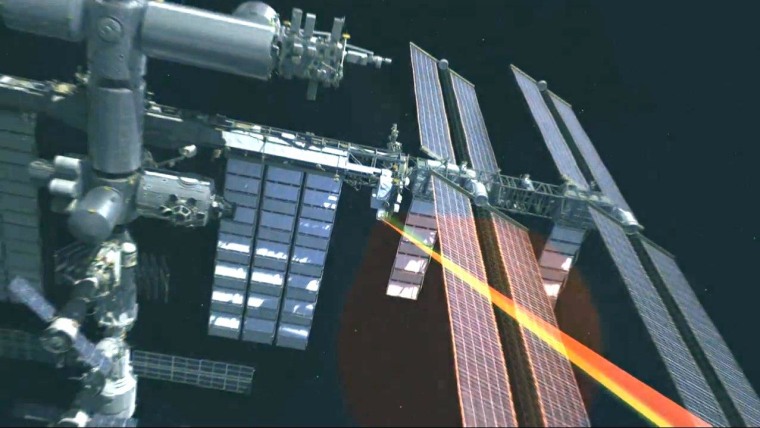For the first time, NASA has used a new type of laser transmitter to beam high-definition video down to Earth from the International Space Station.
Thursday's high-def "Hello World" message was sent via the Optical Payload for Lasercomm Science, or OPALS, which was delivered to the station in April during a SpaceX resupply mission. The OPALS experiment is aimed at demonstrating laser communication systems that can dramatically outpace the radio-based method currently used for deep-space data transfer.
"It's like upgrading from dial-up to DSL," Bogdan Oaida, OPALS project systems engineer at NASA's Jet Propulsion Laboratory, explained during a preview of the test.
Part of the challenge for OPALS was to lock onto its target at Table Mountain Observatory in Wrightwood, California. First, the observatory aimed a laser beacon at the space station, and that helped OPALS get a fix on the signal receiver as the station sped past at 17,500 mph.
The entire transmission lasted 148 seconds, and reached a maximum transmission rate of 50 megabits per second. NASA says OPALS transmitted each copy of its 175-megabit "Hello World" video message in just 3.5 seconds — a feat that would have taken more than 10 minutes using traditional data downlink methods.
The technique isn't such a big deal for data transfer between Earth and the space station, which is served by a constellation of telecom satellites in low-Earth orbit. But laser transmitters could revolutionize communication with interplanetary probes, which currently depend on relatively low-bandwidth radio links with NASA's Deep Space Network.
"Using the space station to investigate ways we can improve communication rates with spacecraft beyond low-Earth orbit is another example of how the orbital complex serves as a stepping stone to human deep-space exploration," Sam Scimemi, director of the space station division at NASA Headquarters, said in a news release.
